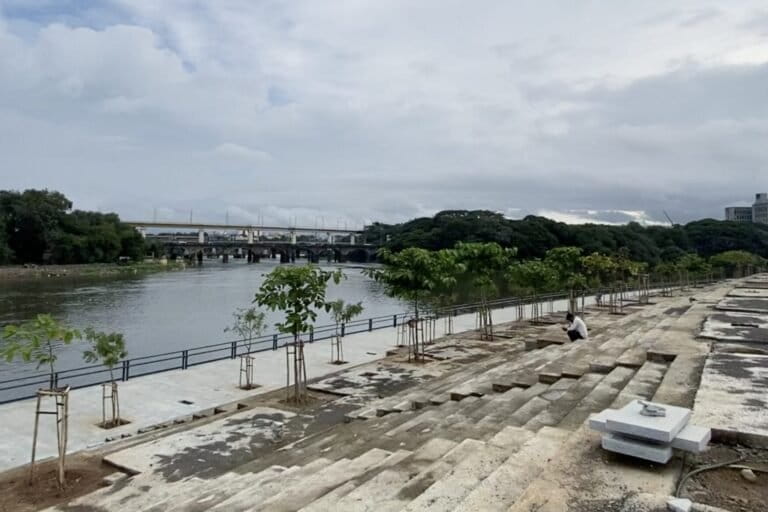- Complex flowers attract more bees. The diversity of the flower species and its density play a role in attracting the bees.
- Studies on the economic value of pollinators have found that bees and other insects have a significant economic contribution with their pollination services.
- There are many ways to support pollinators, right from pollinator-friendly urban gardens to roadside verges with appropriate plants and trees.
The mid-morning ambience in the wild patch of ground beside my home is consumed with the ecstatic hum of many busy bees. And while news of their staggering contribution to world economies pours in steadily, I wandered and wondered about what exactly the bees saw in this and similar other gardens, or what they preferred to see.
General observations indicate that bees’ eyes are more sensitive to ultraviolet light, and that they prefer blue and violet flowers. And while it is possible that bee vision has evolved to become attuned to flowers, it is more likely that flowers have evolved to attract insect pollinators. Flowers often outline ‘landing zones’, pointing bees towards the part of the plant containing nectar and pollen.
Mahua Ghara, whose extensive research in floral colour evolution and fig-wasp mutualism has yielded fascinating insights, says, “True that bees like blue flowers and can also see in the ultraviolet range. But bees rely on a combination of signals that include colour, fragrance, shape, size etc. to find pollen or nectar. So, if a bee finds a flower rewarding, it will tend to visit the flower irrespective of the colour.”
Complex flowers attract more bees and both, the diversity of the species and the density, matters, confirms Parthib Basu, Director, Centre for Pollination Studies and Associate Professor, Ecology Research Unit, Department of Zoology and Centre for Modern Biology, University of Calcutta. “In our studies on pollinators within semi-natural habitats in agricultural landscapes in the tropics (S. Laha et al, 2020), we found that bees don’t just look at colour but also structure. An ideal seed mix for creation of floral strips could include families Fabaceae and Lamiaceae, basically high plant species diversity with synchronous flowering,” he says.

In 2011, Basu’s team assessed pollinator-dependent vegetable production in India using 45 years’ (1963-2008) FAO data, the first ever such assessment done for any country. The index of crop dependence on pollination (DI) was taken into account while analysing for pollinator limitation (declining relative yield growth rate) and pollinator dependency (increasing area under pollinator dependent crops). The economic value was found to be $3720 million. The total EVIP (Economic Valuation of Insect Pollination) of the six most commonly cultivated pollinator dependent crop species grown in India was calculated as $726 million. EVIP for moderate to high DI (0.25 – 0.95) vegetables, e.g., (brinjal, cucumbers, pumpkin, squash and gourds) account for over 80% of this, proving the extreme level of socio-economic dependence of Indian agricultural systems on pollination.
According to a 2017 study published by the Indian Journal of Agricultural Sciences (O. P. Chaudhary et al), the direct contribution of insect pollination to Indian agriculture is estimated to be Rs. 1126 billion ($22.52 billion) annually.
Another related study to improve the stability of pollinator populations, suggests that Crotalaria pallida, and Ocimum basilicum would be the recommended species and for natural enemy populations, Senna alata would be the recommendation. Such species mixes can be taken up for planting on- or off-farm for maximising pollination or pest regulation (Laha et al, 2022). Selection of seed mixtures that support pollinator throughout the year will be appropriate.
Attracting pollinators to urban gardens
Poorva Lalbhai runs an Instagram page called Bees in my Backyard. Her tryst with bees began when the pandemic concerns and lockdowns surfaced. “As an average urban resident is paranoid about bees and wasps, so was I. General perception is that it will sting….stay away! From initially observing them, I moved on to monitoring and documenting the mindboggling diversity of indigenous bees and other pollinators that visit my garden – those part of hives or solitary, and why they do what they do,” she says.
In urban gardens, Lalbhai says she feels that “Initially using a term like ‘butterfly friendly’ may enthuse more people, since they are pretty, do not sting and are harmless. Choosing an appropriate and hardy combination of trees/herbs/shrubs that attract diverse pollinators is important, even sensitively chosen potted plants. I’ve found that even common trees like karanj (Pongamia pinnata), kachnar (Bauhinia variegata), Amaltas (Cassia fistula), moringa (Moringa oleifera), jamun (Syzygium cumini) and kadipatta (Murraya koenigii) are very popular for pollinators.”
Basu adds, “Pollinator-friendly urban gardens can form extended safety networks for these beneficial insects. Appropriate plant species can be identified and made accessible. Nurseries selling wild flower seeds etc. are more accessible abroad. In tropical developing countries like ours, even the basic information to informed decision making is missing, unfortunately.”

In some countries it is common to have roadside verges support bees. This could serve as an inspiration for India where multitudes of road medians could be consciously filled with pollinator friendly plants and the avenue tree species could be selected similarly to support bees that require tree branches or hollow stems, recommends Ghara. Nesting boxes or bee hotels, can be kept in the garden. If the soil is chemical free, the ground-nesting bees can thrive too. But bees are only one of the pollinators, and the domesticated honey bees seem to grab most of the attention. There is also a vast number of interesting yet under-studied wild bees. Another important group of pollinators are flies like the syrphid fly, an unknown pollinator of our gardens, says Ghara.
Dave Goulson, Professor of Biology, University of Sussex and popular author of several books, including Bumblebees: Their Behaviour and Ecology (2003), Silent Earth: Averting the Insect Apocalypses (2021) and The Garden Jungle (2019) has often reiterated that the simplest thing most people can do “is plant a few bee-friendly flowers in their garden. Also, don’t use insecticides (they really aren’t necessary in a garden – what is the worst thing that can happen without them – a few aphids on the roses?). If possible, leave a corner of the garden for the grass to grow long.”
“Encouraging urban wildlife is both a way to tackle the biodiversity crisis, and an opportunity to engage people with nature. There is no significant downside, and there is abundant evidence that we are healthier and happier if we can see green leaves, hear the sound of birds, bees, etc.,” he says. “Gardens can also be a place where food is grown, and then we need pollinators to get good crops. Even a few herbs in a window box are better than nothing – and bees are remarkably good at sniffing them out when they flower.”
Read more: No honey, no hives, but solitary bees have important lives
Banner image: Honeybees use both UV and radiant light to navigate and find flowers rich in nectar by virtue of their compound eyes. Photo by Rajesh Rane/Wikimedia Commons.














